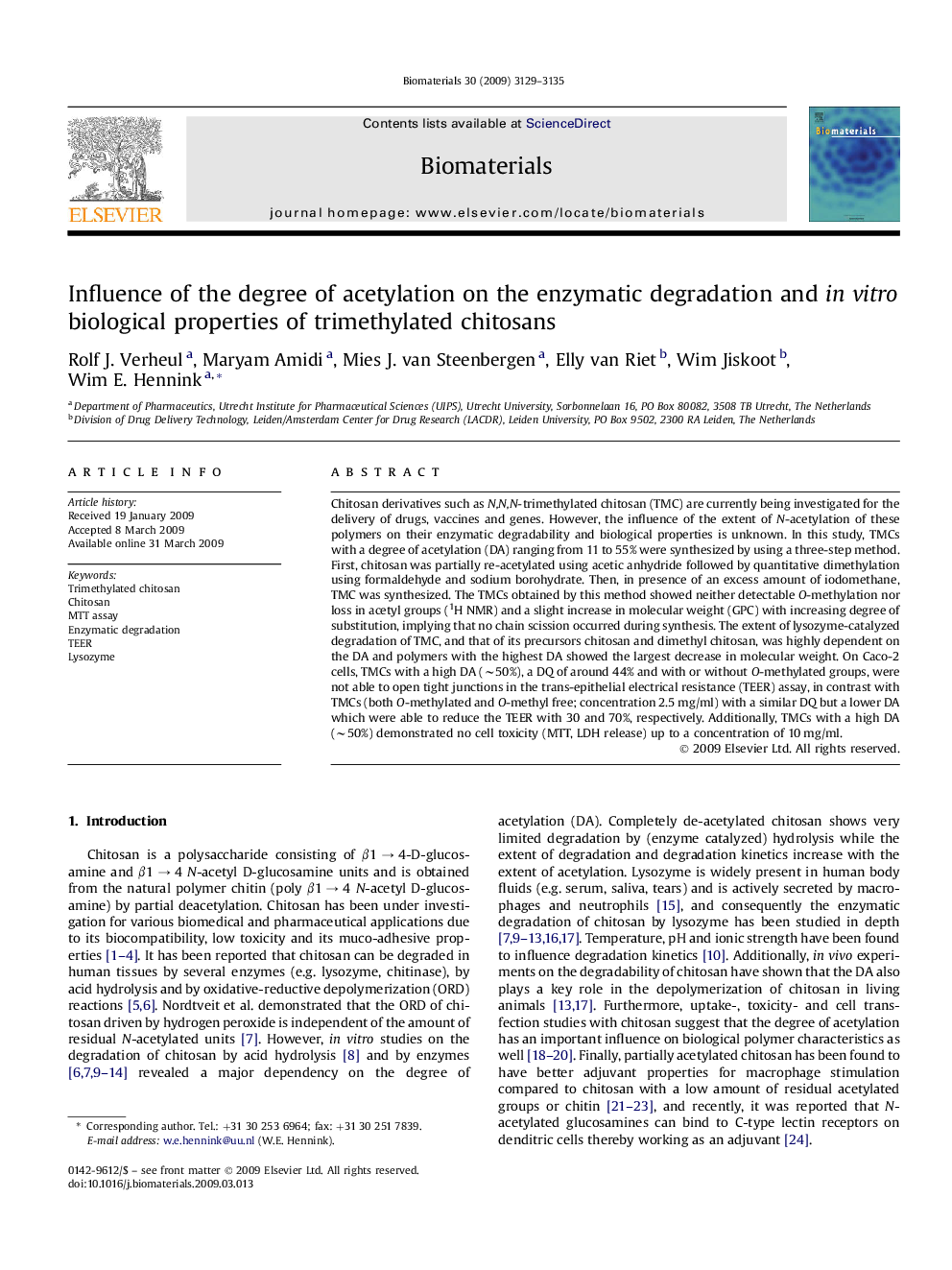| کد مقاله | کد نشریه | سال انتشار | مقاله انگلیسی | نسخه تمام متن |
|---|---|---|---|---|
| 8521 | 596 | 2009 | 7 صفحه PDF | دانلود رایگان |

Chitosan derivatives such as N,N,N-trimethylated chitosan (TMC) are currently being investigated for the delivery of drugs, vaccines and genes. However, the influence of the extent of N-acetylation of these polymers on their enzymatic degradability and biological properties is unknown. In this study, TMCs with a degree of acetylation (DA) ranging from 11 to 55% were synthesized by using a three-step method. First, chitosan was partially re-acetylated using acetic anhydride followed by quantitative dimethylation using formaldehyde and sodium borohydrate. Then, in presence of an excess amount of iodomethane, TMC was synthesized. The TMCs obtained by this method showed neither detectable O-methylation nor loss in acetyl groups (1H NMR) and a slight increase in molecular weight (GPC) with increasing degree of substitution, implying that no chain scission occurred during synthesis. The extent of lysozyme-catalyzed degradation of TMC, and that of its precursors chitosan and dimethyl chitosan, was highly dependent on the DA and polymers with the highest DA showed the largest decrease in molecular weight. On Caco-2 cells, TMCs with a high DA (∼50%), a DQ of around 44% and with or without O-methylated groups, were not able to open tight junctions in the trans-epithelial electrical resistance (TEER) assay, in contrast with TMCs (both O-methylated and O-methyl free; concentration 2.5 mg/ml) with a similar DQ but a lower DA which were able to reduce the TEER with 30 and 70%, respectively. Additionally, TMCs with a high DA (∼50%) demonstrated no cell toxicity (MTT, LDH release) up to a concentration of 10 mg/ml.
Journal: Biomaterials - Volume 30, Issue 18, June 2009, Pages 3129–3135